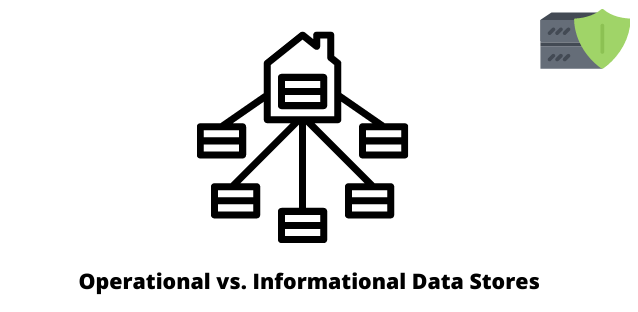
There are two different types of information systems in all organizations: operational systems and information systems.
Operational systems process the daily transactions of the business. They contain information like customer information, employee data and payroll records. Operational data is typically stored in a relational database and the emphasis is on complete, accurate and timely data.
Other functions within a business include planning and forecasting. These functions require information systems to support them. These functions are different from operational ones, and the types of systems and information required are also different. Information systems are designed for collecting, processing, storing, retrieving and distributing information.
An Operational Data Store (ODS)
An Operational Data Store integrates data from multiple transactional systems to allow organizations to report more comprehensively than when data is siloed in different systems of record. As it comes from various sources, integrating it means having to clean it, resolve redundancies and it is loaded according to systematic business rules for controlling and regulating data. A properly designed ODS uses a relational design and will contain the most recent data of any associated records.
An Informational Data Store
An Informational Data Store is designed for information purposes and analysis. Running a business successfully means properly managing financial and organizational data. With effective information, an organization can plan better, predict better and make more informed decisions which leads to more efficiency and improved results.
Data content
The data in the ODS is integrated and subject-oriented. It is a snapshot of the most current data. Informational data is historical data that is archived, derived and summarized. There is often a great deal of derived data which means that rather than storing thousands of sales transactions for a given day, the database may only store the total number of units sold and total sales dollars generated during the day.
Time frame
Data in the ODS is refreshed on a daily or hourly basis or even on a more frequent basis so it offers a real-time or near real-time view that comes directly from operational data.
An informational data store has periodic batch updates. The data often spans a number of different areas and consists of large amounts of related operational data. It offers multi-dimensional views of various kinds of business activities and tends to cover a longer time frame.
Data structure
The data in the ODS is optimized for tactical decision-making. It is useful for simple queries on small sets of data. For example, businesses may want to know how many customers accessed a store during a certain time period. The ability to ask questions like this is a powerful tool for any business.
The data in an informational data store is optimized for analytical decision-making and complex queries. For example, an analyst may want to know how a certain product fared in comparison to another product over a period of six months by customer, region, state, city and store.
Processing speed
An ODS, especially a next-generation ODS, offers very speedy access to real-time data. By decoupling the API layer from the systems of record, it means applications are available all the time, even when one system goes down. Infrastructure can scale to accommodate peak volumes and unexpected loads. The fact that back-end systems aren’t overloaded means performance is very fast.
The response time of informational data stores depends on various factors such as the amount of data involved. A complex query can take many hours.
Volatility
An ODS does not store data history but constantly updates and overwrites previous data. It is highly volatile and doesn’t need to use historical data because its purpose is real-time analysis and tactical decision-making.
An informational data store contains non-volatile data and it isn’t ever deleted, although it can be updated, manipulated and modified.
Availability
When managing multiple systems of record, there is a strong chance that one will go down. When the API layer is decoupled from the systems of record in a smart ODS, applications will still work even when a system of record is down.
A next-generation ODS
A traditional ODS has a number of challenges such as its refresh rate, inability to handle large amounts of data and offer low latency at the same time. It performs slowly when many users access data concurrently.
A next-generation ODS solves all of these problems, providing the performance, low latency and scalability that digital applications require today. This is because it includes elements like smart caching, microservices APIs and event-driven architecture.
Gathering data from source systems into one central repository, like an ODS, has many benefits for businesses. For example, it gives them a more comprehensive view of customers when they can access customer contact details, order information, and support history in the same place. It simplifies the process of diagnosing problems as it is easy to locate a customer order, determine its status and troubleshoot effectively without having to go into component systems.
Looking at the future
Today’s business needs for near-real-time analysis demand a new way of addressing operational and informational processing. The speed of commerce today, the Internet of Things, and new business models are likely to require the use of a combined operational/informational environment. This would allow real-time analytics to be performed on current and historical data, with the analysis results used to drive immediate and highly specific actions.
The bottom line
An ODS enables tactical decision-making due to access to the most current data available in a central repository from various systems of record. It offers better performance and efficiency for running business operations. A next-generation operational data store has many benefits in terms of scalability, agility and high availability. It offers great flexibility when choosing applications and is a valuable asset in any business.
Information data stores support functions such as planning and forecasting, which are also critical for businesses. Whether we will see a combination of the two systems in the future remains to be seen. For the foreseeable future, we are likely to see combined operational/information systems complementing more traditional data warehousing approaches.
Inside Contents

